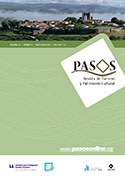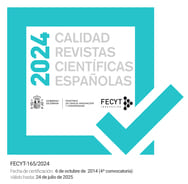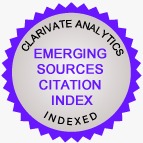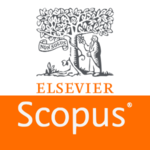Tourism competitiveness drivers and tourism performance: a multi-regional analysis
DOI:
https://doi.org/10.25145/j.pasos.2025.23.020Keywords:
Tourism competitiveness, tourism competitiveness drivers, tourism performance, tourism arrivals, tourism receiptsAbstract
The aim of this research is to identify tourism competitiveness drivers with the greatest explanatory power in determining the performance of the five geographical areas established by the WEF (Europe and Eurasia, Asia-Pacific, The Americas, The Middle East and North Africa, and Sub-Saharan Africa). These drivers should be able to predict in these regions, simultaneously, the number of international tourist arrivals and the revenues derived from these arrivals. In order to achieve this objective, an initial sample of 141 countries was used, grouped into the aforementioned geographical areas, along with their respective scores obtained in the TTCI, subsequently applying different statistical techniques, including Partial Least Squares (PLS) Regression. The drivers that offer the highest prediction capacity are: nature, culture, infrastructure, environmental sustainability, and safety and security.
Downloads
Publication Facts
Reviewer profiles N/A
Author statements
- Academic society
- PASOS. Revista de Turismo y Patrimonio Cultural
- Publisher
- Instituto Universitario de Investigación Social y Turismo. Universidad de La Laguna (España) - Instituto Universitario da Maia ISMAI (Portugal)
References
Abreu-Novais, M., Ruhanen, L., & Arcodia, C. (2018): “Destination competitiveness: Aphenomenographic study”. Tourism Management, 64, 324–334.
Adeola, O., & Evans, O, (2020): “ICT, infrastructure, and tourism development in Africa”. Tourism Economics, 26(1), 97–114.
Andrades, L., & Dimanche, F. (2017): “Destination competitiveness and tourism development in Russia: issues and challenges”. Tourism Management, 62, 360–376.
Azzopardi, E. (2011). The international competitiveness of Malta as a tourist destination (Doctoral dissertation). Retrieved from https://rgu-repository.worktribe.com/preview/295410/AZZOPARDI%202011%20International%20competitiveness%20of%20Malta.pdf
Bazargani, R., & Kiliç, H. (2021): “Tourism competitiveness and tourism sector performance: Empirical insights from new data”. Journal of Hospitality and Tourism Management, 46, 73–82.
Craigwell, R., & Worrell, D. (2008): “The competitiveness of selected Caribbean tourism markets”. Social and Economic Studies, 57(1), 72–107.
Croes, R. (2010). “Small Island Tourism Competitiveness: Expanding Your Destination´s Slice of Paradise”. Research Paper Dies Natalis de la Universidad de las Antillas Holandesas, Willemstad: Curacao.
Croes, R., y Kubickova, M. (2013): “From potential to ability to compete: Towards a performance-based tourism competitiveness index”. Journal of Destination Marketing & Management, 2, 146–154.
Crouch, G. I. (2011): “Destination competitiveness: An analysis of determinant attributes”. Journal of Travel Research, 50(1), 27–45.
Crouch, G. I., & Ritchie, J. B. (1999): “Tourism, competitiveness, and societal prosperity”. Journal of business research, 44(3), 137–152.
Dwyer, L., Forsyth, R., & Rao, P. (2000): “The price competitiveness of travel and tourism: A comparison of 19 destinations”. Tourism Management, 21(1), 9–21.
Dwyer, L., & Kim, CH. (2003): "Destination competitiveness: determinants and indicators". Current Issues in Tourism, 6(5), 369–414.
Enright, M. J., & Newton, J. (2004): “Tourism Destination Competitiveness: A Quantitative Approach”. Tourism Management, 25(6), 777–788.
Enright, M. J., & Newton, J. (2005): “Determinants of Tourism Destination Competitiveness in Asia Pacific: Comprehensiveness and Universality”. Journal of Travel Research, 43(4), 339–350.
Goffi, G., Cucculelli, M., & Masiero, L. (2019): “Fostering tourism destination competitiveness in developing countries: The role of sustainability”. Journal of Cleaner Production, 209, 101–115.
Gómez-Vega, M., & Picazo-Tadeo, A. (2019): “Ranking world tourist destinations with a composite indicator of competitiveness: To weigh or not to weigh?”. Tourism Management, 72, 281–291.
Hanafiah, M. H., & Zulkifly, M. I. (2019): “Tourism destination competitiveness and tourism performance”. Competitiveness Review: An International Business Journal, 29(5), 592–621.
Kim, C. H. (2001): “Destination Competitiveness: Development of a Model with Aplication to Australia and the Republic of Korea, Seúl”. Tourism Research Institute.
Kubickova, M., & Martin, D. (2020): “Exploring the relationship between government and destination competitiveness: the TALC model perspective”. Tourism Management, 78, 104040.
Kumar, N., & Kumar, R.R. (2020): “Relationship between ICT and international tourism demand: a study of major tourist destinations”. Tourism Economics 26(6), 908–925.
Lopes, A.P.F., Muñoz, M.M., Alarcón-Urbistondo, P. (2018): “Regional tourism competitiveness using the PROMETHEE approach”. Annals of Tourism Research, 73, 1-13.
Michael, N., Reisinger, Y., & Hayes, J. P. (2019): “The UAE’s Tourism Competitiveness: A Business Perspective”. Tourism Management Perspectives, 30, 53–64.
Nasr, N. (2017): “Raising competitiveness for the Travel and Tourism Industry: The Case of Egypt”. International Journal of Heritage, Tourism, and Hospitality, 10.
Nazmfar, H., Eshghei, A., Alavi, S., & Pourmoradian, S. (2019): “Analysis of Travel and Tourism Competitiveness Index in Middle-East Countries.” Asia Pacific Journal of Tourism Research 24 (6), 501–13.
Pérez, V.E., Pérez, F., Contreras, I., & Guerrero, F.M. (2020): “An approach to the travel and tourism competitiveness index in the Caribbean region”. International Journal of Tourism Research, 1–17.
Porter, M. (1990). The competitive advantage of nations. The Free Press: New York.
Pulido-Fernández, J. I., Andrades-Caldito, L., & Sánchez-Rivero, M. (2015): “Is sustainable tourism an obstacle to the economic performance of the tourism industry? Evidence from an international empirical study”. Journal of Sustainable Tourism, 23(1), 47–64.
Pulido-Fernández, J.I., & Rodríguez-Díaz, B. (2016): “Reinterpreting the World Economic Forum's global tourism competitiveness index”. Tourism Management Perspectives, 20, 131-140.
Ritchie, J. R., & Crouch, G. I. (2003). The Competitive Destination: A Sustainable Tourism Perspective. CABI Publishers: Wallingford, Oxon (UK).
Salinas-Fernández, J. A., Serdeira-Azevedo, P., Martín-Martín, J. M., & Rodríguez Martín, J. A. (2020): “Determinants of tourism destination competitiveness in the countries most visited by international tourists: proposal of a synthetic index”. Tourism Management Perspectives, 33, 100582.
Stefan, C. (2014): “Travel & tourism competitiveness: A study of World's top economic competitive countries”. Procedia Economics and Finance, 15, 1273–1280.
Uyar, A., Kuzey, C., & Karaman, A. (2021): “Does firms’ CSR engagement support tourism sector development? Moderation effect of CSR committee and CEO duality”. Tourism Economics, 13548166211024502.
Uyar, A., Kuzey, C., Koseoglu, M.A., & Karaman, A. (2022): “Travel and tourism competitiveness index and the tourism sector development”. Tourism Economics, 1–27.
World Economic Forum (2020). The Travel & Tourism Competitiveness Report 2019. WEF: Geneva.
Zhang, H., Geng, Z., Yin, R., & Zhang,W. (2020): “Regional differences and convergence tendency of green development competitiveness in China.. Journal of Cleaner Production, 254, 119922.
Downloads
Published
How to Cite
Issue
Section
License
Copyright (c) 2024 José Luis Durán Román, Juan Ignacio Pulido-Fernández, Isabel Carrillo-Hidalgo, Jairo Casado-Montilla

This work is licensed under a Creative Commons Attribution-NonCommercial-NoDerivatives 4.0 International License.
I confirm that the work is original (of my/our authorship), and that it will not be submitted to other journals or publications until the final resolution of the review process in PASOS, RTPC.
I authorize the publication of my work by PASOS, PSTN of free and open access in any of the formats that I deem appropriate, for an indefinite period of time and as a non-remunerated collaboration.
Likewise, the author(s) understands that the published work may be linked or deposited on any server or included in other publications (republication), provided that the new place and/or new edition references the original publication and acknowledges the authorship and copyright ownership of PASOS RTPC publications.
Authors understand that a plagiarism-self-plagiarism check will be performed, and the article may be removed at any time from the editorial flow.










